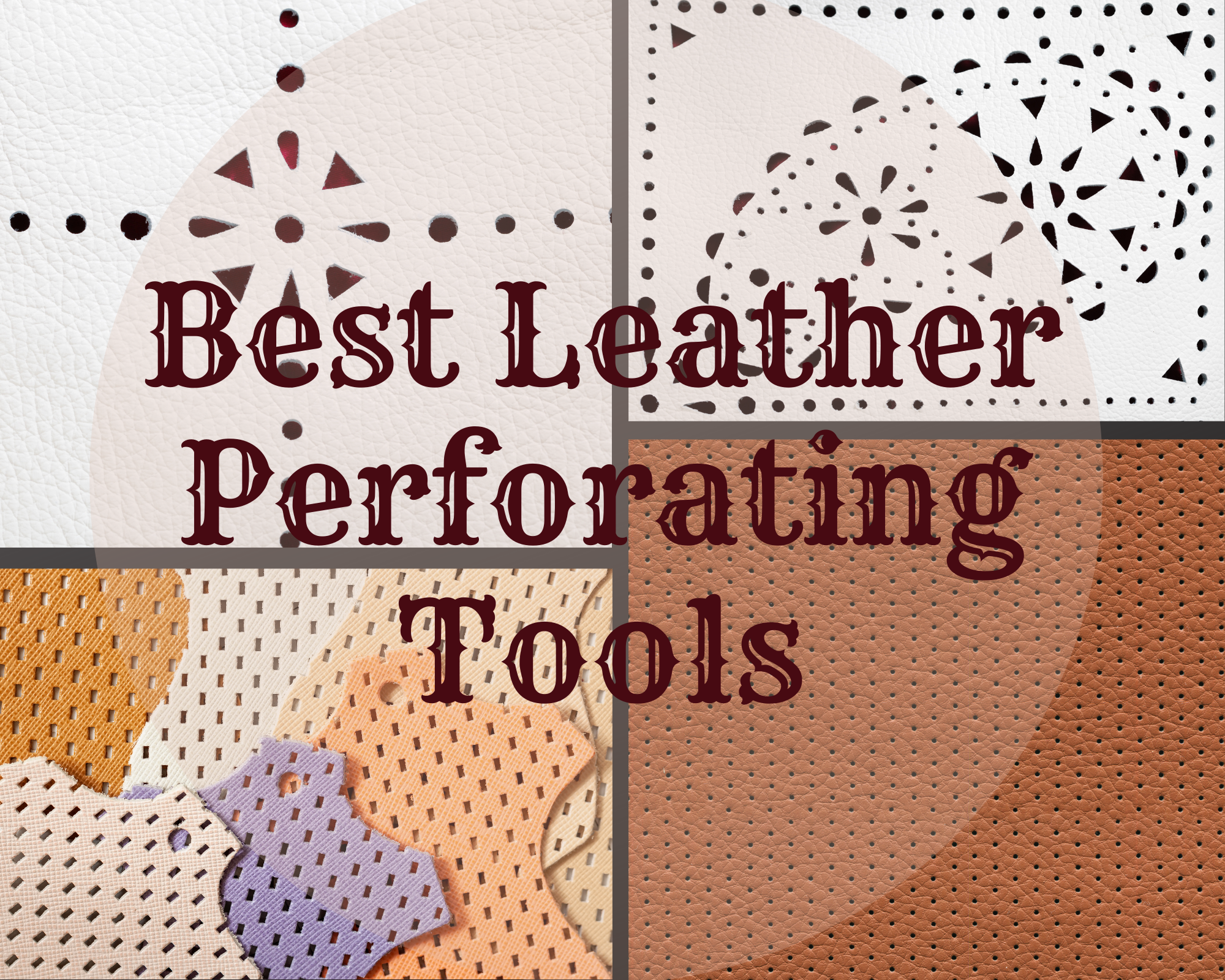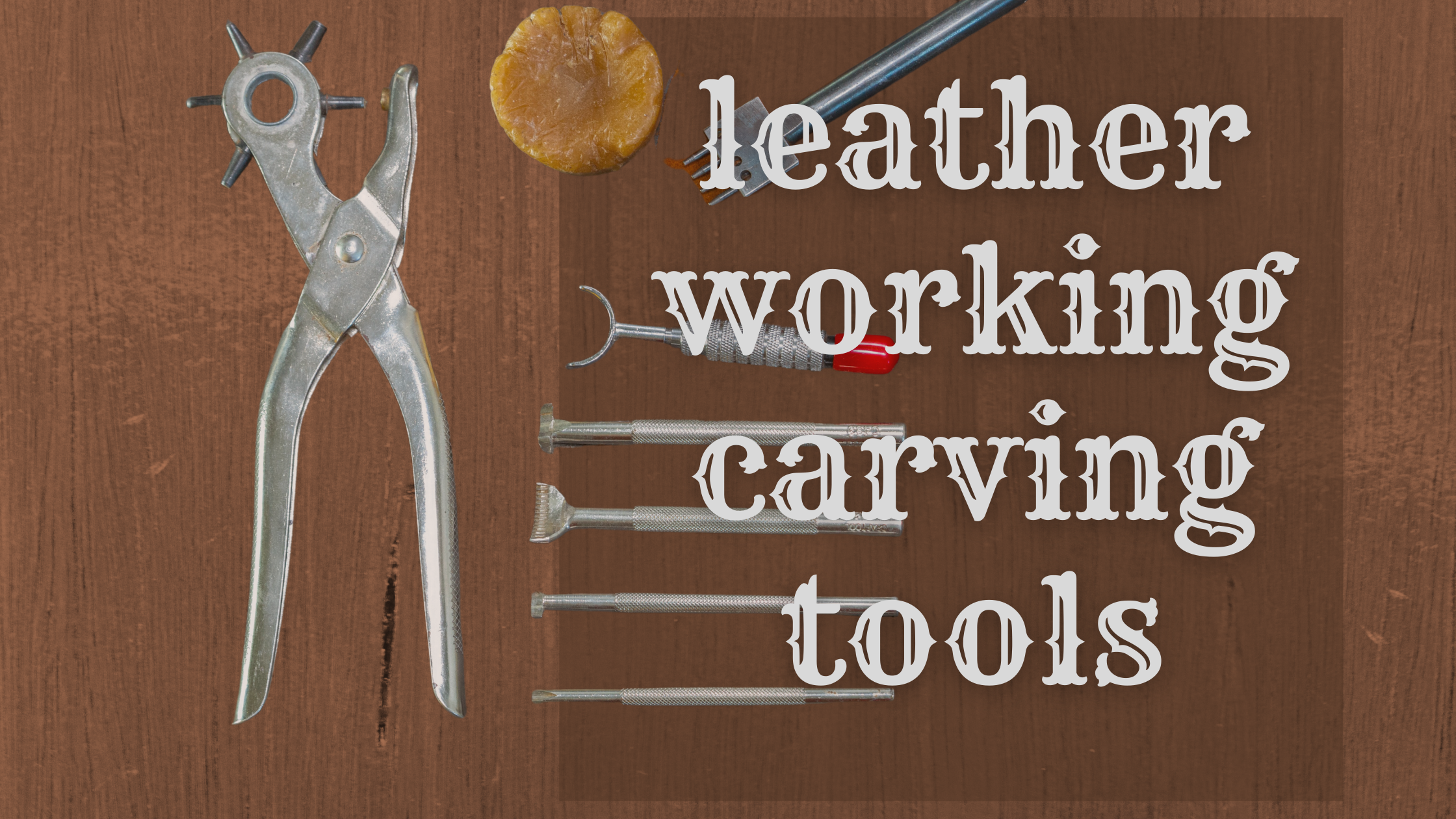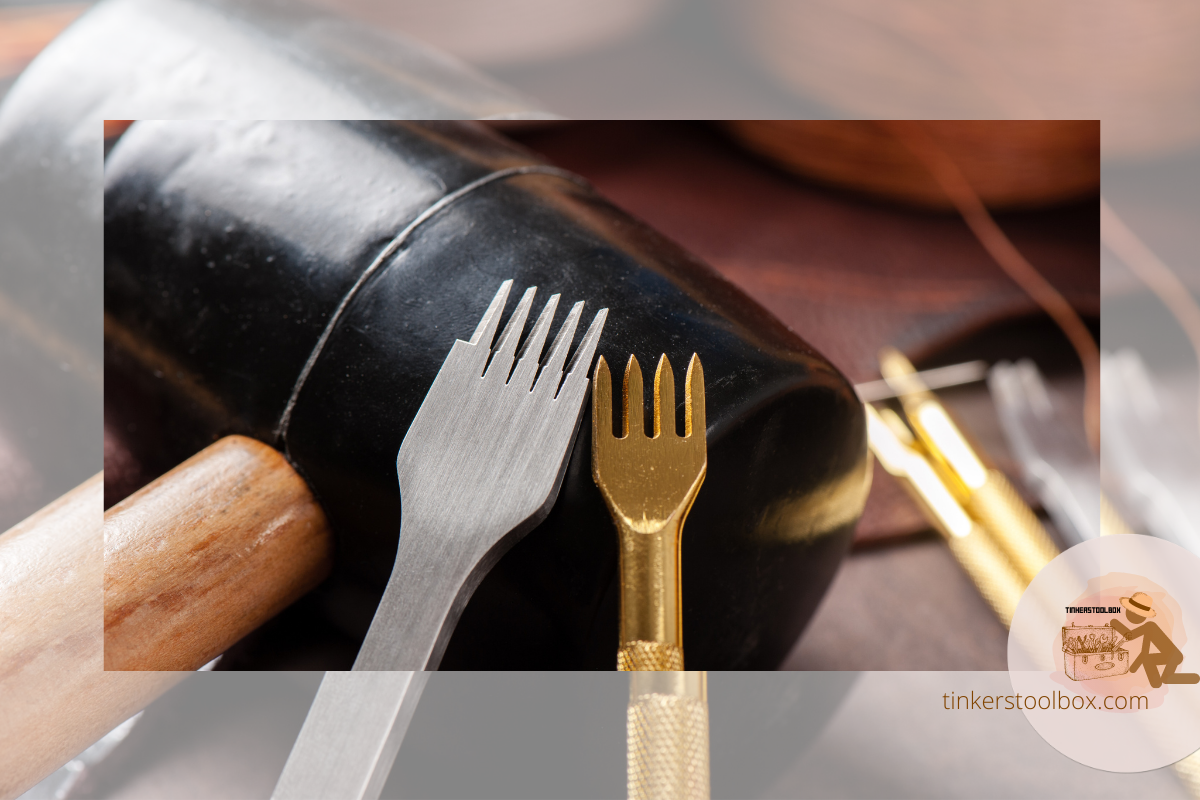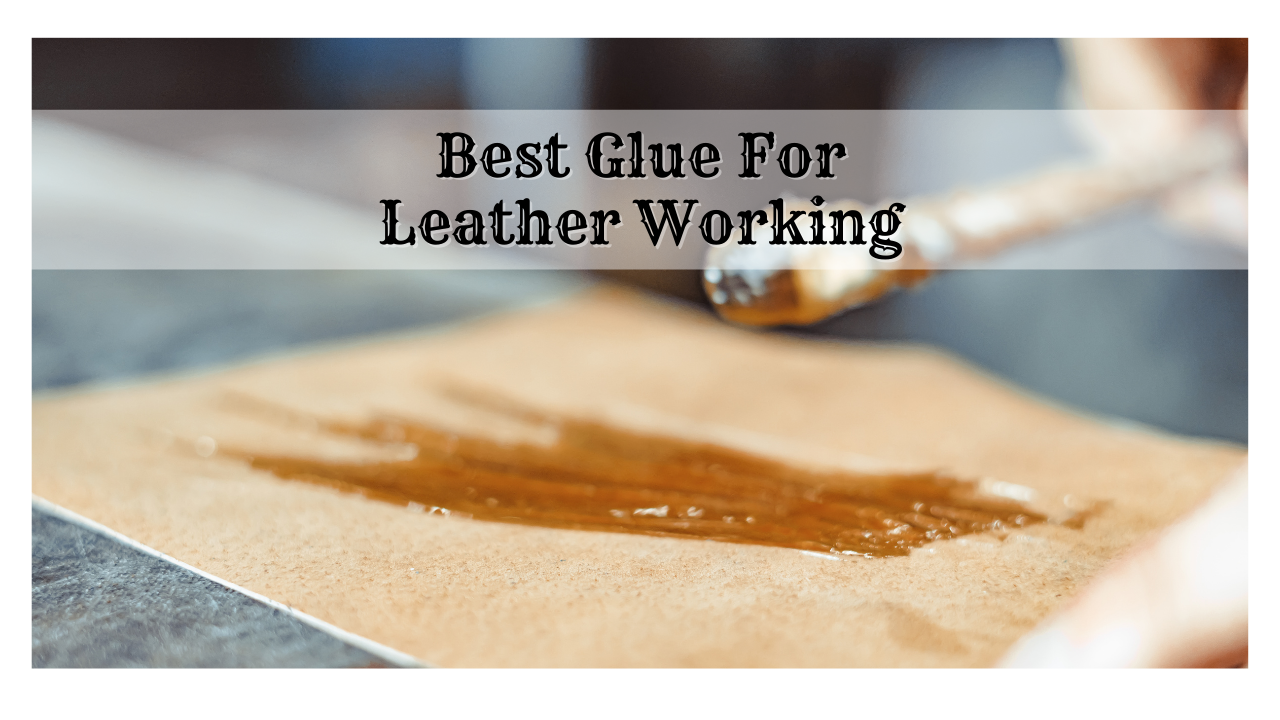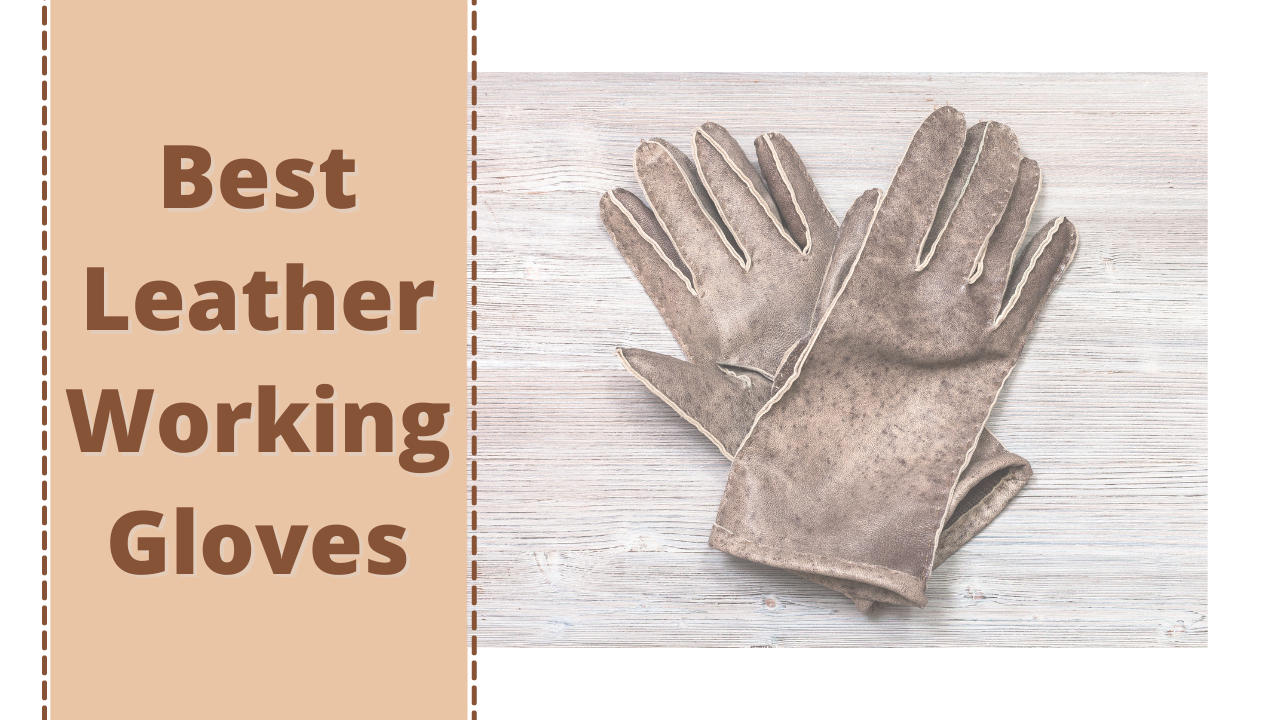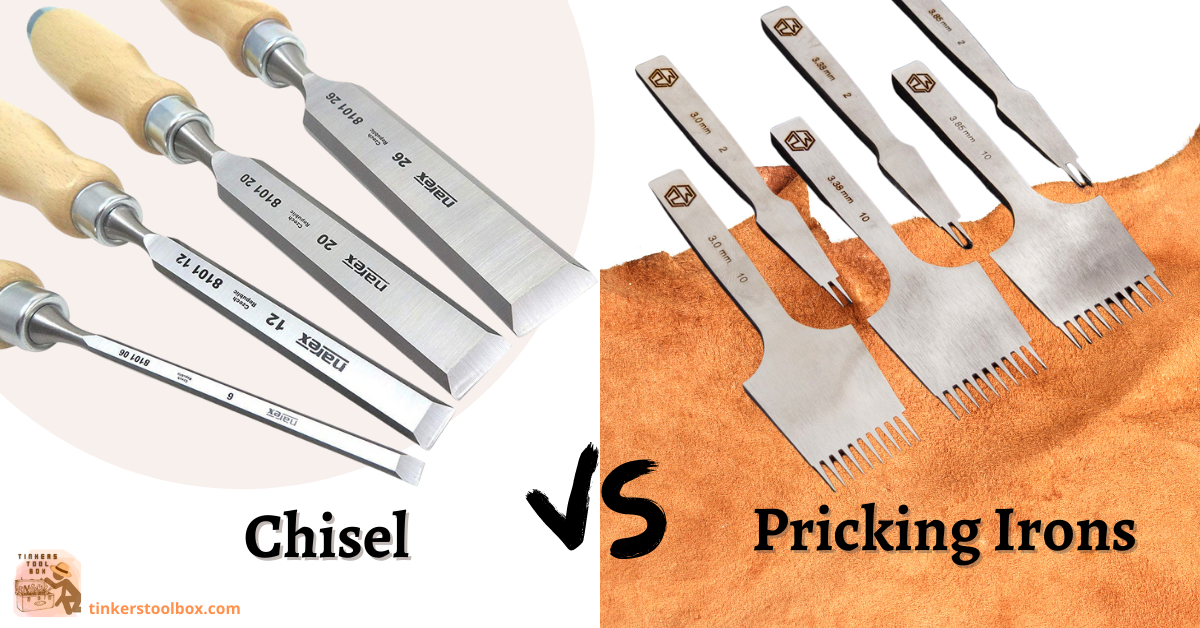Leather Perforation is intentionally making holes at a regular interval on the leather. This is done for decoration or other functional purposes, as seen in furniture. Perforating the leather adds durability because it allows cooling and heating. Doing this and using appropriate tools will help you achieve your furniture or leather projects’ best state. There are many perforating tools available in the market, and the best ones are easy to find and use.
Perforation is quite tricky. You should do it cautiously to avoid causing more harm than good in your leather. If you start leatherworking with small projects and plans to try doing bigger ones like leather furniture, then you should know this technique. Based on my experience, perforation is quickly done with the appropriate tools to use. You can try these out in doing or improving your leather projects in this time of COVID pandemic. There are several options in the market, but I will share the top five you can try out on your own and decide what will best work for you.
Hole Punches: Simple Yet Super Functional
If you are looking for an economical perforating tool, a hole puncher is the most common tool in perforating leather. It is affordable and comes in handy.
Drive Punches
Many punches are available in the market. You can choose different punch shapes that you want to get. Some common shapes produced by manual hole punchers are oval, round, and square. The use of these hole punches will depend on the perforation look you want to achieve. Most leather punches are used and driven in by a mallet.
In using a round punch, you can choose in different hole sizes. Some projects you can use a round punch are belt and bucket holes. For oval punches, it creates oval-shaped holes in your material. You can also use oval punches on belts, bags, and other types of projects depending on their width.
For creating tapered holes, you can use a leather trace punch. It is where you make an oval cut with asymmetrical sides (one side is wider than the other or vice versa). It is useful for various projects and should indeed be in your working toolset for performing leather perforation.
Pros
For drive punches, various shapes are available and multiple sizes among shapes you can choose suited for your projects. Some punches have interchangeable tips, requiring less storage space, and handy not just for perforation activities.
Cons
In changing punch hole tips, additional time is needed. It also requires the use of a mallet or hammer to push through. It does need extra maintenance depending on the materials the holes are made up of.
Where You Can Get Them
Image Source: amazon.com
Since hole punches are a common and essential tool in leatherworking, you can buy them in almost any physical store. It is also available in online stores, which will save the hassle of going out. Single hole punch with diameters ranging from 0.5 mm to 2.5 mm costs around $28 to $50 for each set. It will also depend on the brand you will buy. Most of these options come in various body materials that you can choose from.
Rotary Punch: The Best Perforation Buddy
If you are looking for a cost-effective and easy way out of using hole punches and mallets, you can use a rotary punch. This is affordable and only needs less force in making your perforation jobs.
What You Should Know About Rotary Punch
It is one of the best tools for creating holes for thick and thin leather. It is a tool that is always included in leather craftings like belt making and other simple projects. The knife-like edges of its sharp hollow cylindrical steel create perfect leather holes.
The tube or the hollow cylindrical steel is rotatable so that the target-sized holes of the leather project like in the belt are achieved. It comes in a variety where a user can choose the suitable rotary puncher according to his/ her leather project’s preference.
Some of its classifications include rotary punch for thick leather only, while some are created for thin leather only. The different rotary punch found in the market comes with another rotary puncher that some of them were made with multipurpose.
Pros
Rotary punches are cost-effective. It is light and suitable for traveling around with a lot of affordable but decent options. It is straightforward to use because you do not need too much pressure to create holes. It can punch six different-sized holes in both leather and fabric. It creates an accurate and clean hole in an instant. It comes in handy, which is suitable for DIY leather projects and indeed a long-lasting punching tool.
Cons
If you buy a rotary punch, you should choose carefully since some brands do not cut easily because punches do not have equal angles. You will also need to check to ensure hole punches are aligned regularly.
Not all the handles are made of rubber, and some are steel-made hence painful in hand for longer used or squeezing. Some tool of the rotary puncher has an irreplaceable punch. Also, it is intended for DIY projects and not likely for commercial use.
Where You Can Get Them
Image Source: us.amazon.com
You can buy from physical stores and also in online shops. It costs around $19.61 and no import fees. Prices may vary in different shops and locations.
Pricking Irons: Not Just For Marking Leather
Image Source: “Pricking irons.” by Vertstone is licensed under CC BY 2.0
For instant perforation jobs, you can quickly use a pricking iron and mallet. It may not produce clean holes as punches in the underside, but it can do the job.
What You Should Know About Pricking Irons
It is a tool commonly used to prick the leather before stitching. Generally, it is created for leather marking purposes only. This tool can still be used in leather perforating jobs by making marks before the actual hole punches to ensure a uniform hole spacing.
Pricking irons could be a good alternative in perforating activity using a mallet to make its teeth pass through the leather. It comes in a variety of sizes, designs, and metals for crafting different leather projects. Some pricking iron consists of one to ten sharp teeth.
Pros
Pricking irons are readily available in your leatherworking tools. It’s affordable and can be easily replaced. It is handy and comfortable to use. It has an ergonomic design and creates even and numerous holes at once.
Pricking irons come in various body steel types that are very durable. It comes in different hole diameters and prong counts—one of the leather tools that required low maintenance and a long-lasting leather tool.
Cons
Using a pricking iron produces uneven sides of holes resulting in a feathery leather underside. The holes created by pricking iron are not as smooth to use as rotary punches or hole punches. You also have to put effort into piercing through the leather with a mallet since it needs to be paired with a mallet when in use.
Where You Can Get Them
You can buy pricking irons in both online and physical stores. You may already even have it in your toolset. If purchasing a new one, you can choose from many options in the market where the price ranges from $6 to $54 for a set.
DIY Perforation Tool: Scratch Awl and Mallet

Working with your DIY leather item such as a wallet is best assisted with a scratch awl. The scratch awl tool requires skill to have accurate hole punching but through practice, creating perfect holes with an even space becomes more manageable.
What You Should Know About Scratch Awl or Nail

There is a smooth handle or knob, and on the other end, there is a rounded metal shank or spike. The handle is commonly made from solid wood or plastic. Some companies produce the tool out of a single solid piece of steel. The gripping substance on the handle end can also be rubberized.
A scratch awl is a hand tool used in woodworking and general shop work to scribe or “scratch” marks or lines onto different surfaces. It’s often used to start or punch and pierce holes in materials (for example, before drilling).
Scratch awls are often used as a pre-etcher before making a more complete or deeper cut as a preparation tool. It provides a groove or track mark for larger tools to follow with the line it produces.
While a leather mallet is a standard tool primarily used to strike or hit other instruments, they have a big, cylindrical head and are made of either rawhide or plastic. Rawhide models typically have a rolled rawhide top that is finished to be thick while still being light. This assists in shock absorption and reduces the possibility of metal tools being damaged when struck. Rawhide leather mallets are usually more costly than plastic mallets.
During leatherworking, leather mallets are used for several impact tasks; the choice to use is based on a combination of use and personal preference. Mallets may be used for punching and tooling. Hammers are ideal for shaping leather, particularly in the shoe and saddlery industries. Caution: Always use eyewear as protection while using this tool
Pros
Nails can be an alternative for a scratch awl when limited. This pair is convenient to use but pushing through holes takes some time. Without a lot of drag, it glides through holes smoothly. The Haft is designed to fit all hand sizes.
Cons
When used on very thick leather, the blade appears to bend. It might need a little polishing or sharpening to get it to a razor-sharp edge. The handles are not made of wood and are very thin. For people with large, powerful hands, it might be too narrow. Also, some scratch models lose their sharpness when used frequently.
Where You Can Get Them
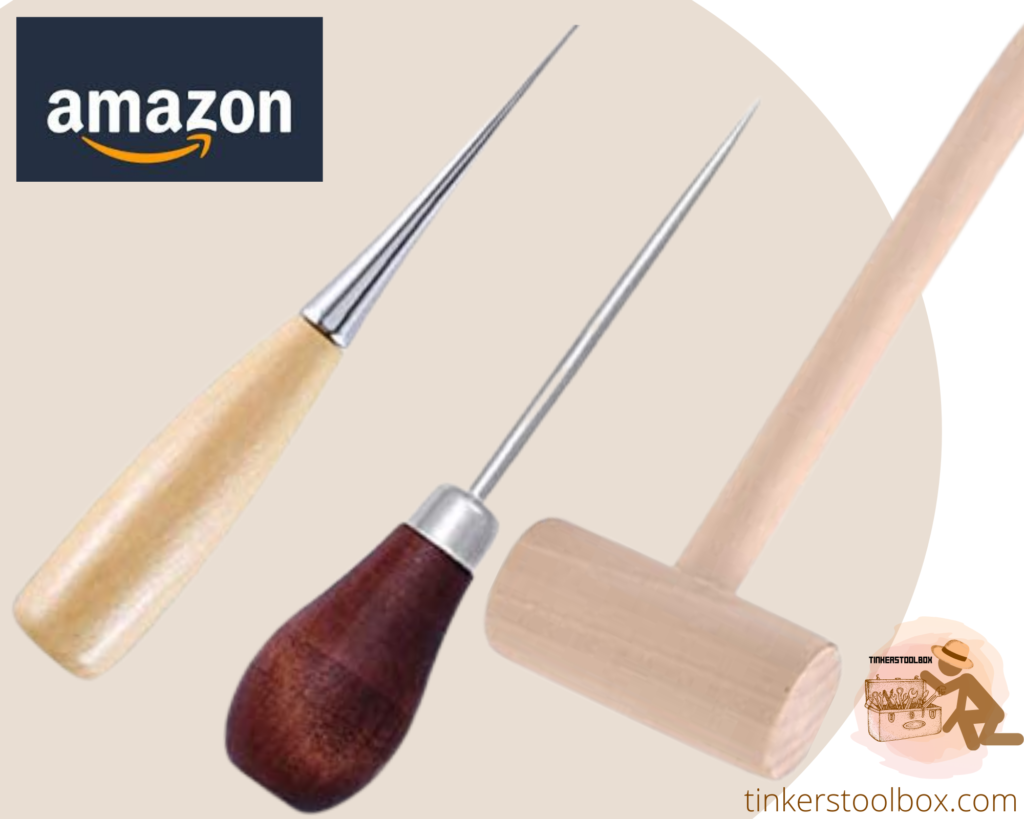
It can be bought from online shops and physical stores where the price starts at $4 up to $5 for scratch awls. Leather mallet made of rubber and wood can range from $8 to $24.
Leather Perforating Machine: Punching and Designing
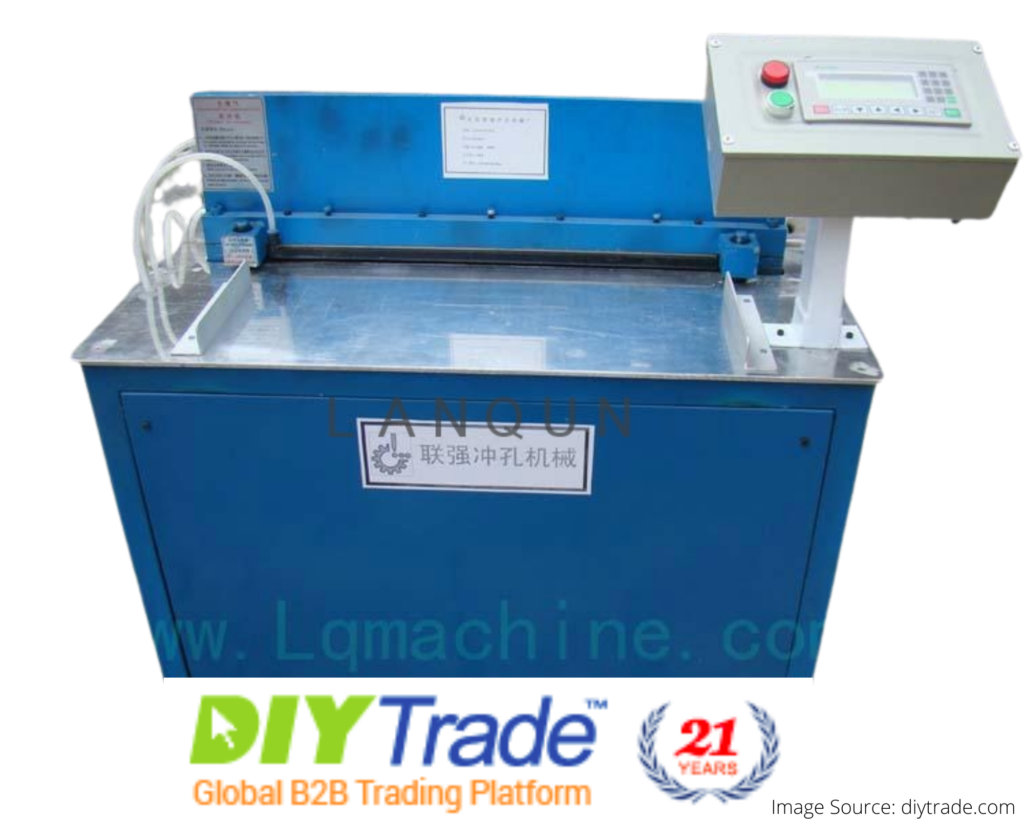
Perforating leather will not only help the cooling and heating system but also promote designs. Their crafter can emboss designs through the perforating machine by following patterns or changing the leather holes from circular to angular. Moreover, the machine helps the crafter perforate quickly and perfectly quickly in a short period, particularly perforating upholstery.
What You Need To Know About Leather Perforating Machine
You can buy a dedicated perforating device ranging from hand-operated to high production air-suction feed systems, depending on the applications and process quantity. The majority of reliable perforating systems can also score and slit. There is a variety of perforating blades available, ranging from coarse to fine micro-perf blades. There are multi-functional machines with built-in perforating and machines with optional perforating accessories available in addition to perforation.
Pros
Since there is no need to make pilot holes before using the hand-held punching machine, it is much easier than using a drill. All you have to do now is mark your home’s position, set the depth gauge, and start punching.
This is a manually operated hand tool, so if you’re concerned about conserving energy and don’t mind putting in a little effort, this tool will serve you well. It comes with a minimum of 3 years of insurance. Using a machine is indeed faster and comfortable.
Cons
One limitation to a perforation machine is that only such thicknesses of material can be punched with a hand-held punching machine. If a sheet is too thick, it will either not fit between the jaws or will be difficult to punch through.
A hand-held punching machine can only punch holes in some types of materials. Some materials are too thick or difficult to punch through, so you’ll need to use a drill instead.
Where You Can Get Them

It is available in both online and physical leather shops. A standard leather perforation machine can cost a minimum of $3000 and a maximum of $28000. It will cost you much higher for a customized one with a price ranging from $40,000 to as high as $60000.
To-Dos and Not to Dos with Perforated Leather Products
Leather perforation is indeed helpful by promoting the breathability of your leather. However, perforated leathers can be more sensitive to other external factors such as stains and mechanical damage. You will not want this because, of course, it means loss of resources and an unpleasant leather crafting experience.
The Dos
To ensure that a leather cleaner is appropriate, test it in a separate area. Vacuum the area entirely first. When cleaning, dirt, grit, and loose grime won’t scratch or rub into the perforated leather.
Clean once a month and maintain every three to 12 months. Clean and wipe it from seam to seam of the leather. Use a microfiber cloth in cleaning to avoid scratch on the leather surface.
Use natural ingredients and a non-toxic cleaner or conditioner, then use a damp cloth to remove cleaning residue. Make sure to apply the conditioner to the wet cloth before in the perforated leather surface.
The Don’ts
Do not apply the cleaner or conditioner directly to the perforated leather and do not wet the leather; thus, clean with foam only. Never use a conditioner or cleaner that contains petroleum or waxes, and never let the solution dry on the leather. Lastly, never use a hard bristled-brush for deep cleaning.
Conclusion
Perforation is indeed one technique to promote breathability and enhance the durability of your leather outputs. Knowing this technique paired with the right tools to use will ensure perforating jobs smoothly. Do not fret if you have a limited budget and tools, you have other options to use that could be readily available in your stash. Try it out, and in no time, you will master leather perforation.
